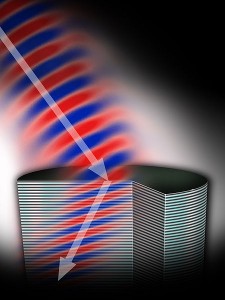 Fiction and reality have meshed to incredible extents in the past decades, and it is no longer a surprise to see sci-fi-inspired inventions used in everyday life. The military field has been no exception and is now at the cusp of groundbreaking innovations that could change war-making to its core.
Fiction and reality have meshed to incredible extents in the past decades, and it is no longer a surprise to see sci-fi-inspired inventions used in everyday life. The military field has been no exception and is now at the cusp of groundbreaking innovations that could change war-making to its core.
The next frontier in defense technology is so-called “stealth” technologies, in which the U.S. military has already invested huge funds. New research is opening up the prospect of achieving something close to invisibility on the battlefield, a breakthrough likened to Harry Potter`s famous invisibility cloak. While most stealth technologies are designated to elude enemy radars, new invisibility technologies could conceal objects in real time, not just from radar but from the naked eye.
The science of invisibility took off in the mid 2000s. This research has mostly involved the use of metamaterials, which are extremely thin composites that bend electromagnetic waves in a way that negatively refracts lights. Cloaking mechanisms use metamaterials to route light waves around an object and create the sensation of looking through the object.
The use of metamaterials for electromagnetic cloaking has been intensely studied in the past decade and has achieved some successes. Recent research, mostly sponsored and initiated by militaries, has revealed the potential for full 3D cloaking and invisibility in free space. In 2011, for instance, scientists devised an “invisibility carpet,” which conceals objects under etched layers of silicon oxide and silicon nitride. By bending light waves away, it masks the “bump” of the object to be hidden so the cloak appears flat and smooth.
The range of technologies of deception providing something close to invisibility also includes so-called “active” or “adaptive camouflage.” This type of camouflage uses optical technology that replaces in real time the appearance of what is masked with the appearance of the surroundings by placing a thin screen between the observer and the concealed objects. Research in the field of active virtual camouflage has already been tested or applied in military aviation, the maritime domain, or on the ground, such as to cloak tanks.
The private sector is teaming up with national defense agencies to develop real-time active camouflaging of military vehicles. BAE Systems has proposed a model of adaptive technology based on hexagonal pixels that mimics the heat signals in the surroundings. With such momentous developments, the military is not only opening new gates to innovation but also creating new unknowns. Cloaking technologies would make warring actors less detectible and therefore less predictable.
In the “stealth era,” battlefield strength might just be dictated by the level of stealth or invisibility technology at the disposal of combatants. This is likely to trigger a scientific and technological race, as well as provide new platforms for countries to enhance their prestige domestically and internationally. China has already openly joined the competition to develop visual and electronic cloaks of invisibility. The central government has funded over 40 research teams in the past three years to develop invisibility technologies. Considered instrumental to spying or hiding of military equipment, the project has so far been carried with high discretion, or as one of the researchers describedit, “We are invisible people studying invisible technology.”
The era ushered in by stealth technologies could revolutionize war-making, surveillance, and military-technological relations, creating new interstate competitions and potential security dilemmas. Increasingly, these technologies are treated not as possibility, but as reality. A 2012 contracting document at the Pentagon, for instance, mentions“clandestine mobility” as one of the Air Force’s key capabilities, stating that security forces should focus on “detection avoidance and solutions that reduce signatures to cloak Special Operations Forces’ presence in the area of operations.”
Though the research and testing of the invisibility technology are already at an advanced stage, the technology’s practical usage is still in its infancy. Current designs mostly hide objects from microwaves or infrared waves, and scientists are skeptical that cloaking devices could be fully functional soon. Even so, the emerging field of stealth and invisibility technologies is expected to grow in attention and importance. This could boost the role of private technology companies as states expand funding for military research in order to keep pace with their rivals. Just as the technology it aims to create, the achievement of invisibility (or something close to it) will result in more elusive and obscure threats and challenges to states by further reducing military transparency. Expect that more national militaries will embark on a mission to catch up with these technologies and develop their own.
This post originally appeared on the website of the Georgetown Journal if International Affairs.








No Comment